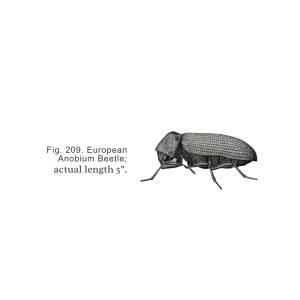Borer Treatments offers specialist borer control and Identification services throughout New Zealand for all main species of wood borers (sometimes known as bora or woodworm) and other wood boring insects and native drywood termites that affect New Zealand timbers. Larvae of the beetles eat their way through the interior of wood before emerging via flight holes as adults to mate and begin the life cycle over again, each female borer beetle can lay between 20-40 eggs. All untreated timbers can be attacked.
New Zealand has 5 types of wood boring insects that attack old house structures and seasoned wood. The 4 main kinds of borer beetles are the Common House Borer, European Powder-post borer, the NZ Native Anobium Borer, and the NZ Native Two-Toothed Longhorn Borer. You can tell by the flight holes in the wood and frass (Borer dust) which one you are dealing with. Common House Borer leaves small 2mm round holes, Native House Borer leaves round holes, and the Two-toothed Longhorn Borer leaves larger, oval holes.
Two Tooth Longihorn native borer is the most damaging of the four, as it can remain in the wood for up to 12 years and can attack the hardwood that is used for building foundations and framing.
Common borer under the right conditions can attack the timber until it has lost its structural integrity. Common borer is responsible for most of the insect damage found in structural and decorative timber in New Zealand. In drier parts of the country we have NZ native borer (Leanobium flavomaculatum) which attacks the heartwood, quite often seen in exterior weatherboards on the sunny side of the house.
We specialize in old villas and bungalows in Ponsonby, Grey Lynn, Mt Eden, Mt Albert, Epsom, Devonport and all the old suburbs in Auckland.
The 5 main wood boring insects in Auckland are:
- Common House Borer (European Furniture Beetle - Anobium punctatum)

- Two-toothed Longhorn Beetle (NZ Native Ambeodontus tristis)

- Native Anobium Beetle (Hadrobregmus magnus) and Leanobium Flavamaculatus (often confused with Common borer)

- Powder-post Beetle (Lyctus brunneus)

- NZ native drywood termite (Kalotermes brouni) not as common as borer but can still do isolated damage to house timbers, particulary in low lying subfloor and wall timbers. Likes high humidity and evidance of their presence is damage to the timber and (frass) faecal pellets left inside the timber.
The only borer in NZ known to have a natural predator is Common Borer (European Anobium Beetle) The borer larvae can be attacked by a small parasite (Theocolax formicarius) that will enter the old borer exit holes, quite often seen on exterior weatherboards with borer damage.

Borer treatment technicians will survey the extent of infestation and whether the infestation is still active and apply penetrating treatments with natural insecticide, which persists in the wood, killing insects as they emerge, and preventing re-infestation for at least ten years or more in normal circumstances.
Borer Treatment technicians have had over 50 years experience in borer control and hold Approved Timbor Handlers Certificates.
.
